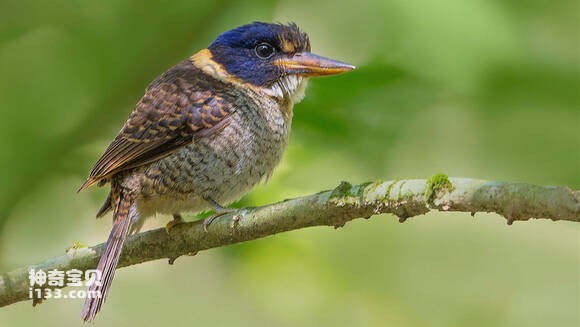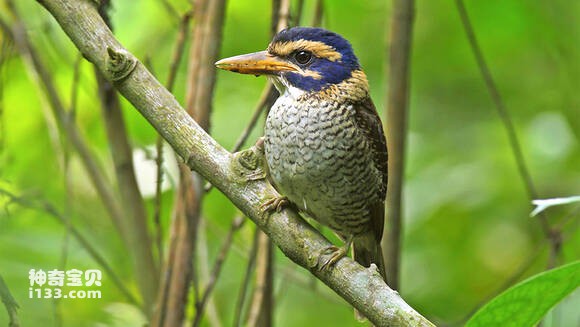Actenoides princeps
IUCN
LCBasic Information
Scientific classification
- name:Actenoides princeps
- Scientific Name:Actenoides princeps,Scaly-breasted kingfisher
- Outline:Climbing birds
- Family:
Vital signs
- length:No textual research information is available
- Weight:No textual research information is available
- lifetime:No textual research information is available
Feature
Distribution and Habitat
It is distributed in the Wallace Region (refers to the area east of the traditional Wallace Line (from the eastern side of Mindanao through the Makassar Strait between Bali and Lombok) and west of Papua New Guinea, including the Indonesian islands of Sulawesi, Nusa Tenggara Islands, Southwest Islands, Moluccas (Maluku Islands), East Timor and other islands).
It usually inhabits dense forests and riverbanks near water.
Appearance
The emerald is a forest kingfisher that lives in Sulawesi and surrounding islands in Indonesia. The body feathers are dark, the back feathers and wings are dark gray, and the lower body chest and abdomen are covered with gray and gray stripes. The beak is dark yellow mixed with black, and the wings have golden feathers. It has a relatively striking white collar.
The mouth is thick and long like a chisel, the base is wider, the mouth peak is straight, the peak ridge is round, there is no nasal groove on both sides; Wing circle, the first primary feather is equal or slightly shorter than the seventh primary feather, and the second, third, and fourth are nearly equal in length; Primary feather base with white spots; The tail is round.
Details
Actenoides princeps, or Scaly-breasted kingfisher, has three subspecies.

Jadeite usually preys alone or together with lovers, and is completely carnivorous. Often searching for prey in leaves or dirt. The main diet is invertebrates such as crickets, spiders, scorpions, and snails. It also eats small vertebrates such as small fish, small snakes and lizards.

Emerald nest on the earth cliff or river dyke, with the mouth digging tunnel type cave for the nest, 60 cm deep, 20 cm wide, 10 cm high long, oval. These caves are generally bare of bedding. The eggs are laid directly on the nest ground. Some also drill holes in tree trunks for nests. Oval, pure white, about 29.4×26.2 mm in size.
Listed in the International Union for Conservation of Nature (IUCN) ver 3.1:2008 Red List of Birds: Threatened.
Protect wild animals and eliminate wild meat.
Maintaining ecological balance is everyone's responsibility!








